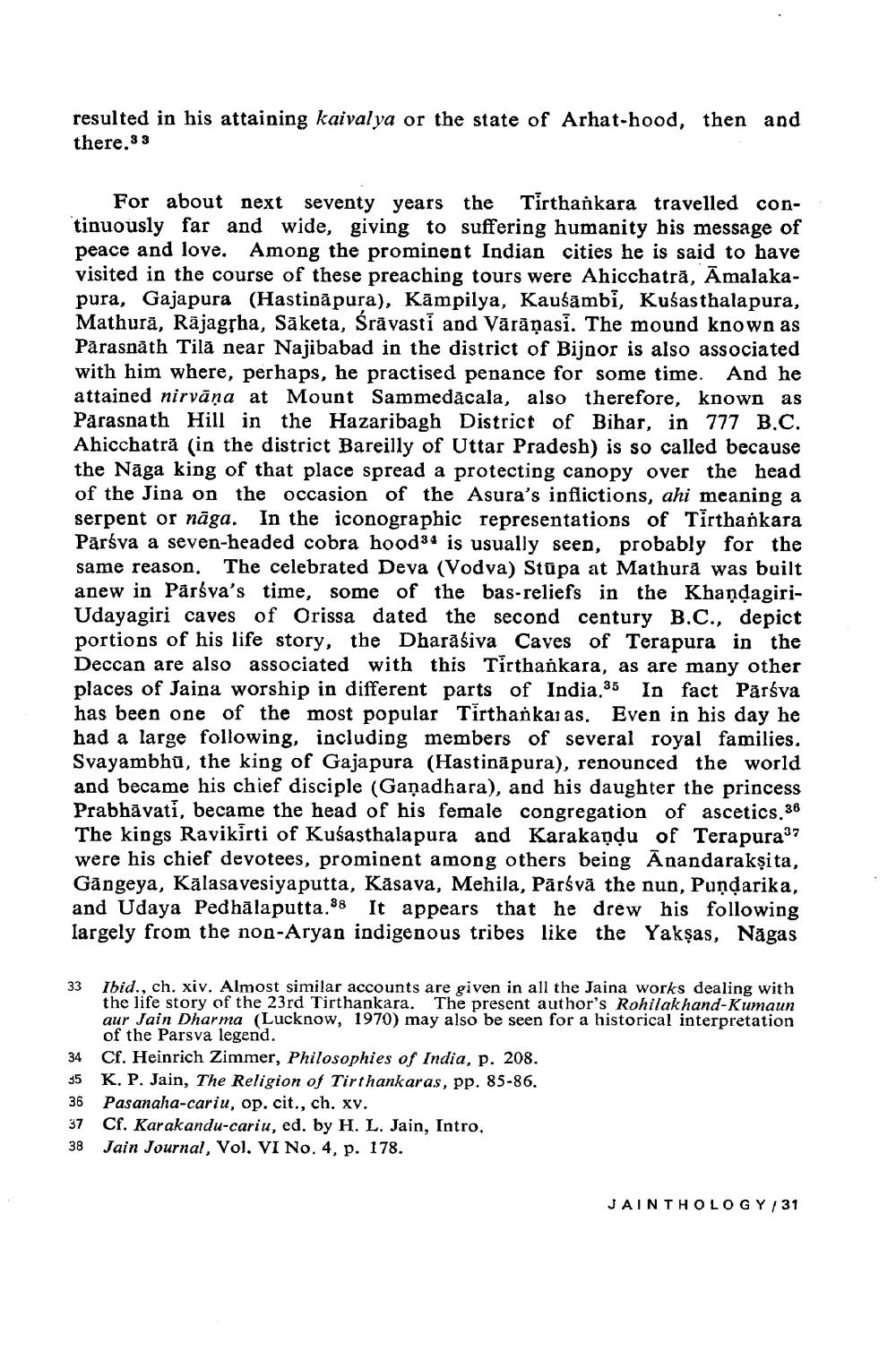________________
resulted in his attaining kaivalya or the state of Arhat-hood, then and there.33
For about next seventy years the Tirthankara travelled continuously far and wide, giving to suffering humanity his message of peace and love. Among the prominent Indian cities he is said to have visited in the course of these preaching tours were Ahicchatră, Amalakapura, Gajapura (Hastinapura), Kampilya, Kauśambi, Kuśasthalapura, Mathura, Rājagṛha, Saketa, Śrāvasti and Vārāṇasi. The mound known as Parasnath Tila near Najibabad in the district of Bijnor is also associated with him where, perhaps, he practised penance for some time. And he attained nirvana at Mount Sammedãcala, also therefore, known as Parasnath Hill in the Hazaribagh District of Bihar, in 777 B.C. Ahicchatră (in the district Bareilly of Uttar Pradesh) is so called because the Naga king of that place spread a protecting canopy over the head of the Jina on the occasion of the Asura's inflictions, ahi meaning a serpent or naga. In the iconographic representations of Tirthankara Parsva a seven-headed cobra hood34 is usually seen, probably for the same reason. The celebrated Deva (Vodva) Stupa at Mathura was built anew in Parsva's time, some of the bas-reliefs in the KhandagiriUdayagiri caves of Orissa dated the second century B.C., depict portions of his life story, the Dharaśiva Caves of Terapura in the Deccan are also associated with this Tirthankara, as are many other places of Jaina worship in different parts of India.35 In fact Parsva has been one of the most popular Tirthankar as. Even in his day he had a large following, including members of several royal families. Svayambhu, the king of Gajapura (Hastinapura), renounced the world and became his chief disciple (Gaṇadhara), and his daughter the princess Prabhavati, became the head of his female congregation of ascetics.36 The kings Ravikirti of Kusasthalapura and Karakaṇḍu of Terapura37 were his chief devotees, prominent among others being Anandarakṣita, Gängeya, Kalasavesiyaputta, Kāsava, Mehila, Pārśvā the nun, Puṇḍarika, and Udaya Pedhalaputta.38 It appears that he drew his following largely from the non-Aryan indigenous tribes like the Yakṣas, Nāgas
Ibid., ch. xiv. Almost similar accounts are given in all the Jaina works dealing with the life story of the 23rd Tirthankara. The present author's Rohilakhand-Kumaun aur Jain Dharma (Lucknow, 1970) may also be seen for a historical interpretation of the Parsva legend.
34
Cf. Heinrich Zimmer, Philosophies of India, p. 208.
35 K. P. Jain, The Religion of Tirthankaras, pp. 85-86.
36
Pasanaha-cariu, op. cit., ch. xv.
37
Cf. Karakandu-cariu, ed. by H. L. Jain, Intro,
38
Jain Journal, Vol. VI No. 4, p. 178.
33
JAINTHOLOGY/31




